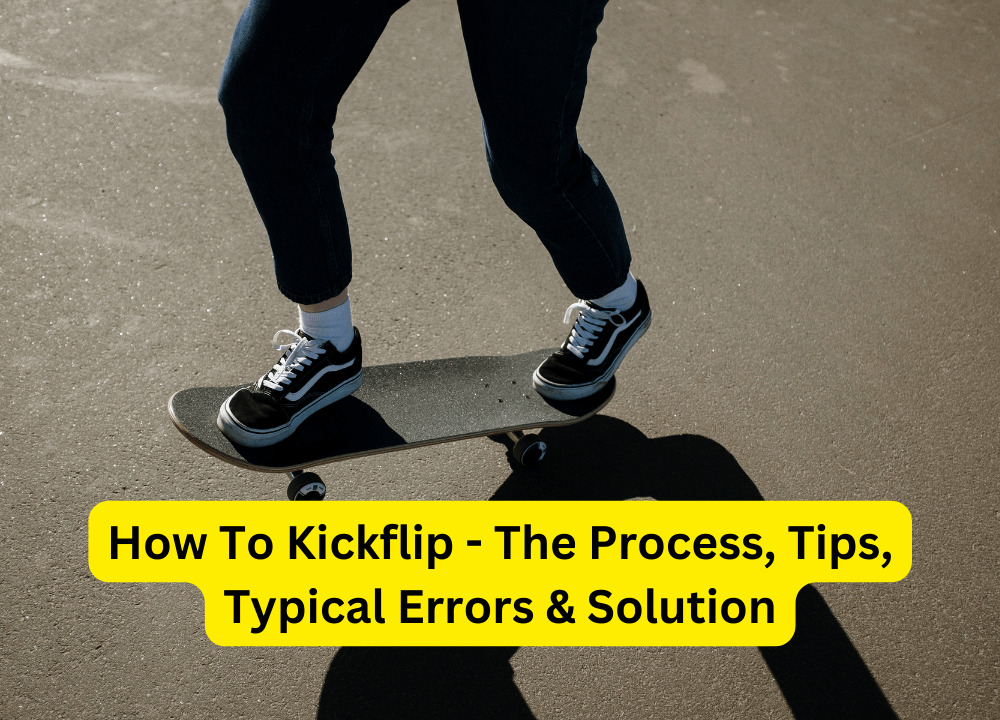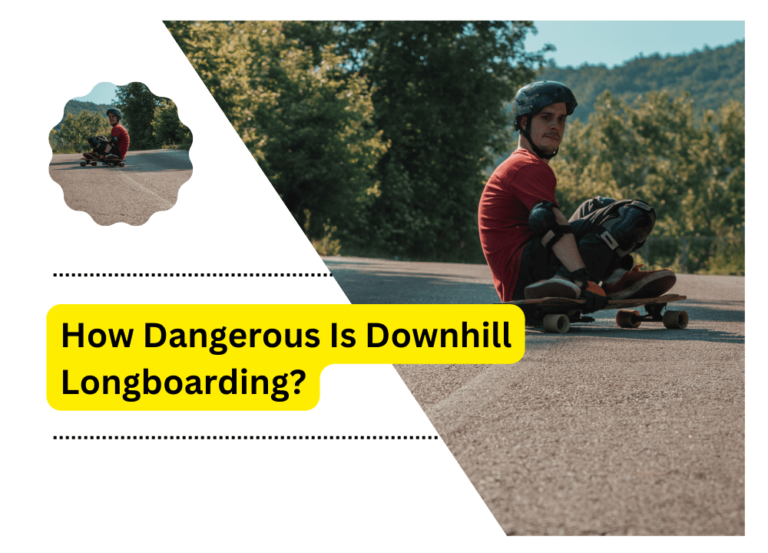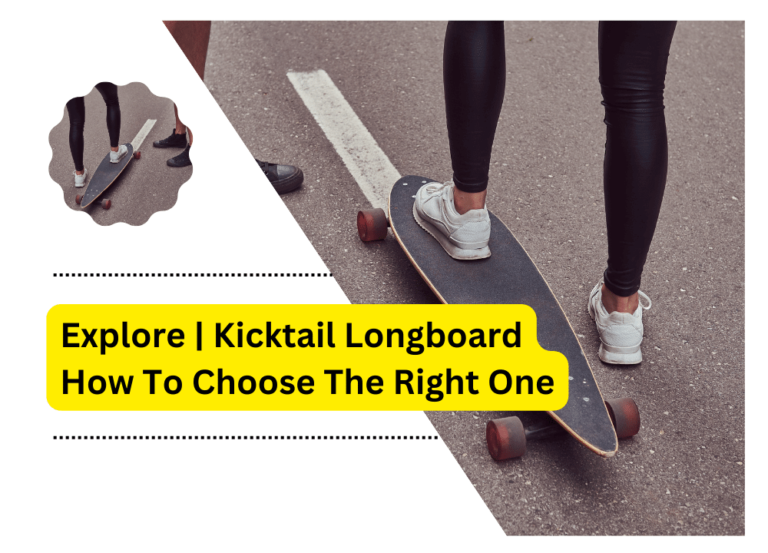How To Kickflip – The Process, Tips, Typical Errors & Solution

Practice is essential for sharpening the muscle memory necessary to do the kickflip consistently. Repetition and patience, like with any other talent, are essential for growing and perfecting your technique. Skaters may learn the essential coordination, balance, and timing to execute the feat with accuracy and confidence by devoting time to practice. This article will take you through the step-by-step process of how to kickflip. We’ll go through proper foot stance, body motions, and the sequence of actions needed to pull off this feat effectively.
What is Kickflip?
To add to your knowledge, the kickflip is a fundamental trick in skateboarding that has become linked with flair and technical prowess. It is a popular and visually pleasing trick in which the skateboarder rotates the board 360 degrees while in mid-air. The kickflip is frequently one of the first tricks that prospective skateboarders aim to learn since it provides the groundwork for more advanced tricks while also adding flare to their arsenal. Proper foot placement, precise board control, and a sense of time are all important factors in landing a kickflip.
How to Do Kickflip?
Position Your Feet
Getting your feet in the appropriate place on the skateboard is critical to doing a good kickflip. The proper foot placement is critical for creating the necessary force and control during the trick. Here’s how to properly place your feet for a kickflip:
- Begin by laying your skateboard down on a level surface with the nose (front) pointed slightly upward.
- Stand next to the skateboard, with your front foot (the one you kick with) slightly tilted diagonally towards the nose of the board. Your foot’s ball should be centered on or just behind the front bolts.
- The toes of your back foot (the foot that stays on the tail of the skateboard) should be slightly off the edge of the board. Your back foot’s ball should be centered on or just behind the rear bolts.
- The breadth of your stance will be determined by your own taste and level of comfort. Experiment with various widths to determine what works best for you. In general, a shoulder-width stance is a decent place to start.
- Maintain balance and stability by keeping your knees slightly bent.
Proper foot positioning is crucial for achieving the right balance and leverage during the kickflip. It allows you to generate the necessary pop and flick motions required to flip the skateboard. Remember to maintain a relaxed and comfortable posture throughout the trick. By situating your feet in this manner, you build a solid foundation and the required leverage to successfully complete a kickflip.
Getting the Flip
After flipping the board with your front foot, the back foot is essential in catching the flip. Your rear foot must be ready to stop the rotation as the skateboard begins to flip. Emphasize the need of dragging the back foot up towards the nose of the skateboard to halt the flip. Then drag your rear foot up towards the nose of the skateboard to capture the flip. Position your rear foot over the grip tape near the front bolts when the board flips. This move will bring the spinning to a halt and position you to land on the board.
Maintaining Balance After Landing a Kickflip:
To retain balance after landing the kickflip, spread your weight evenly between both feet. You have to avoid leaning too far forward or backward to maintain control. To be balanced and stable, keep your body centered over the skateboard.
After grabbing the board, maintain the dragging motion of your front foot to guide the board forward. This will assist you in maintaining speed and rolling away effortlessly. Moreover, to ensure stability, keep your shoulders aligned with the direction of the board.
Kickflips can be difficult to learn, so be patient and persistent. You need to consistently practice precise foot stance, pop, flick, and catch. Another important thing to remember is to begin by doing stationary kickflips before moving on to rolling kickflips.
The Landing and Rolling Away
Here we have some instructions on how to detect the landing and prepare for impact:
- Maintain your focus on the skateboard throughout the trick, particularly during the flip and catch.
- When landing a kickflip, it’s critical to bend your knees to absorb the force and avoid overstretching your joints.
- Bending your knees creates a cushioning effect that absorbs shock and enables a more comfortable landing.
- Keep your weight centered over the skateboard to ensure balance and stability.
- Remember that learning to do kickflips requires time and effort. Begin with the fundamentals, progressively improve your technique, and be patient with yourself as you grow.
Timing Tips for the Catch:
- Repetition of the kickflip action will help you acquire a sense of time and rhythm.
- Pay attention to the skateboard’s rotation speed during the flip and predict when it will finish the spin.
- Keep your gaze fixed on the skateboard and be ready to react immediately when it reaches the proper catch position.
- As the skateboard rotates, use your front foot to modify the angle of your foot to level it out.
Tips for Keeping Balance And Control When Performing a Kickflip:
- To begin, place your front foot at a little angle across the skateboard, with the ball of your foot at the center of the board. Your toes should be pointed toward the edge of the skateboard.
- Use your rear foot to firmly push the skateboard’s tail down towards the ground. This will generate the necessary upward velocity for the kickflip.
- As you pop the tail, immediately slip your front foot diagonally off the skateboard and towards the nose. It should feel like you’re scrapping your foot against the ground. The flip of the skateboard is initiated by the flick of your front foot.
- Keep your shoulders parallel to the board during the kickflip motion. This will assist you in maintaining balance and control.
- Maintain a modest forward lean with your body weight centered over the skateboard. This will aid in your stability and keep the board from flipping too far away from you.
Typical Errors and Troubleshoot
Let’s Recognising Common Mistakes Beginners Make While Learning the Kickflip:
- Failure to aggressively pop the tail down might result in a poor flip or the board not flipping at all.
- Inconsistent dragging of the front foot might result in uneven flips or the board not flipping at all.
- Failure to completely commit to the leap and leveling action might produce instability and make landing the trick difficult.
Solutions for Avoiding These Mistakes:
- Put enough power into the tail to ensure a forceful pop.
- Consistently practice the flick action, focusing on drawing the front foot towards the nose with the appropriate amount of pressure.
- Practice leaping and leveling movements without the flip until you feel comfortable.
- Exercises like balancing on one foot or practicing manuals might help you improve your balance and stability.
- Seek advice from experienced skateboarders or think about taking classes to get personalized comments and direction.
Remember that learning kickflips takes time and practice, so don’t give up. You’ll be able to improve your technique and retain equilibrium after landing the feat with dedication and constant work.
Conclusion:
To summarize, learning how to kickflip may be a difficult yet rewarding endeavor for skateboarders. You may increase your chances of successfully completing this trick by following the crucial procedures and tactics indicated above. Remember to practice on a regular and consistent basis, since learning the kickflip takes time and perseverance.
Additionally, when skating, always prioritize your safety and use protective gear to reduce the danger of injury. You can confidently add the kickflip to your skating arsenal with effort, practice, and a commitment to safety. So take your board, get to the skatepark, and continue to push yourself to reach new heights in your skating experience. Have fun flipping!






